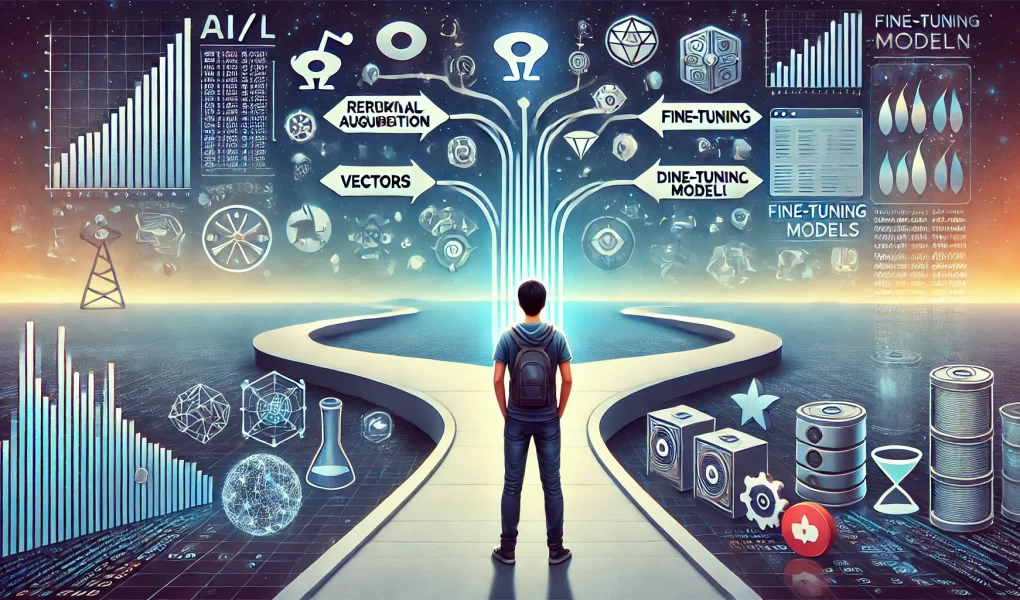Raj’s response to a thread on Reddit
Recently I came across a thread on Reddit – the post was put out by a new grad looking for advice on whether they should spend time on learning Retrieval Augmented Generation (RAG) or Fine-tuning. Here is the original post:
I recently graduated and am diving into the world of AI/ML. I’m currently on the lookout for my first job and find myself at a crossroads between two areas: Retrieval-Augmented Generation (RAG) and fine-tuning models.
I’m curious about the following:
1. Industry Demand: Which of these skills is currently more sought after in job postings? 2. Learning Curve: As a fresher, which area would you recommend focusing on first? 3. Career Opportunities: Are there specific roles or companies that typically favor expertise in one area over the other?
I want to make the most of my early career and would appreciate any insights or personal experiences you might share. Thank you!
Here is my response:
Let me start with a general advice and then I will answer your specific question.
If you’re considering AI/ML/Gen AI as a career path, it’s important to build a good foundation (for starters) in these concepts. How deep you go will depend on the specific role you’re aiming for. For example, if you’re pursuing a data science role, you’ll need a strong understanding of how to prepare datasets for fine-tuning models, model architectures, various techniques to improve model performance ….. On the other hand, if you’re interested in becoming a Gen-AI application developer, you’ll need to dive deep into concepts like RAG (Retrieval-Augmented Generation), embeddings, vector databases, and more.
Now let me answer the question you asked.
Both RAG and fine-tuning are techniques used to help large language models (LLMs) perform tasks more effectively. Keep in mind that even Fine Tuned models can be used for RAG, so the two techniques are not mutually exclusive ….. you would decide on the technique to use based on your requirements and other factors. At times you may need to use both the techniques e.g., you may fine tune a model for fraud-detection and then use RAG for passing the transaction data to determine if the transaction is fraudulent or not as dynamic data such as transactions are not baked into the model with FT.
As far as industry demand for RAG/FT is concerned – it all depends on the use cases. Today most organizations start with RAG as its much faster & cheaper to build. But this trend seem to be shifting (per my observations as Gen AI specialist) as cost of FT is going down and newer libraries are making it easy to carry out fine tuning. Bottom line, you MUST learn both.
Learning curve – As a Gen AI application developer, it’s important to build a solid foundation in LLM (Large Language Models) concepts, learn one or two frameworks to become proficient in developing Gen AI applications, and experiment with at least five to ten different models (whether commercial or open-source). You should also familiarize yourself with prompt engineering best practices and spend time building a few apps to understand the challenges that arise.
As a Data Scientist, you’ll be more involved in tasks like data engineering, insights generation, and fine-tuning models. A deeper understanding of both models and data is expected, and becoming a skilled data scientist typically requires years of hands-on experience.
Opportunities – Both data science and Gen AI application development are in high demand today. While the future is hard to predict, one thing is clear: having skills in generative AI development will definitely give you an edge. Nearly every enterprise is looking to adopt Gen AI to gain some kind of competitive advantage.
My advice is to focus on building a solid foundation in Generative AI, regardless of the role you plan to pursue. In the future, Gen AI (LLM) is likely to be integrated across a wide range of software systems. Full disclosure, I am the author of a course titled “Generative AI application design & development”. Take a look at the intro to my course if you are interested https://youtu.be/Tl9bxfR-2hk
All the best !!
Full disclosure: I am the author of the course “Generative AI application design & development“.
#GenerativeAI #LLM #VideoTranscription #OpenAIWhisper

